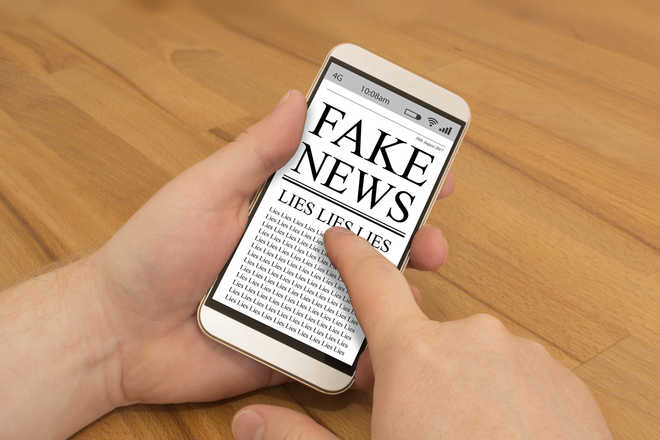London
As the spread of fake news on social media gains momentum, researchers now reveal that people can detect a fake image of a real-world scene only 60 per cent of the time.
Even then, they can only tell what is wrong with the image only 45 per cent of the time, the researchers added.
The high-quality of these fake images were to be blamed for this, said the team from University of Warwick.
“This has serious implications,” said Sophie Nightingale, PhD student and lead author, adding “People are exposed to these fakes on a daily basis through social networking sites, the Internet and the media.” To reach this conclusion, the researchers set up an online test that used a bank of 40 images created from 10 original images sourced from Google Images.
Six of the original images were subjected to five different types of manipulation, including physically implausible and physically plausible manipulations, to create 30 manipulated images.
Over 700 participants in the online test were shown 10 random images that included each of the five manipulation types and five original images.
Participants never saw a manipulation or original form of the same image twice.
Sixty per cent of images were correctly identified as being manipulated.
“We found that people were better at detecting physically implausible manipulations but not any better at locating these manipulations, compared to physically plausible manipulations,” explained Derrick Watson, study co-author, in a paper published in the journal Cognitive Research: Principles and Implications.
“We need to work to find better ways to protect people from the negative effects of photo manipulation, and we’re now exploring a number of ways that might help people to better detect fakes,” said Kimberley Wade, another co-author.
Breaking News
 Driving Naari Programme launched in Chandigarh
Driving Naari Programme launched in Chandigarh Punjab farmers reaping benefits of Mann Government’s crop diversification initiatives
Punjab farmers reaping benefits of Mann Government’s crop diversification initiatives Punjab and Kerala Join Hands to Address NRI Concerns
Punjab and Kerala Join Hands to Address NRI Concerns Macron refuses French Prime Minister’s resignation after chaotic election results
Macron refuses French Prime Minister’s resignation after chaotic election results Modi lands in Russia for first visit since Ukraine offensive
Modi lands in Russia for first visit since Ukraine offensive Saudi Arabia approves granting citizenship to global experts under Vision 2030
Saudi Arabia approves granting citizenship to global experts under Vision 2030 Vigilance arrests Panchayat Secretary, former Sarpanch for embezzlement in Panchayat funds
Vigilance arrests Panchayat Secretary, former Sarpanch for embezzlement in Panchayat funds Housing crisis in Canada forcing residents to move out of pricier cities: Poll
Housing crisis in Canada forcing residents to move out of pricier cities: Poll Historic Milestone: Canada Appoints Its First Female Chief of Defense
Historic Milestone: Canada Appoints Its First Female Chief of Defense Victory parade of T20 World Cup-winning Indian cricket team concludes in Mumbai
Victory parade of T20 World Cup-winning Indian cricket team concludes in Mumbai Maximizing impact of Aadhar in Punjab
Maximizing impact of Aadhar in Punjab Amritpal Singh to take oath as Khadoor Sahib MP on July 5
Amritpal Singh to take oath as Khadoor Sahib MP on July 5




































